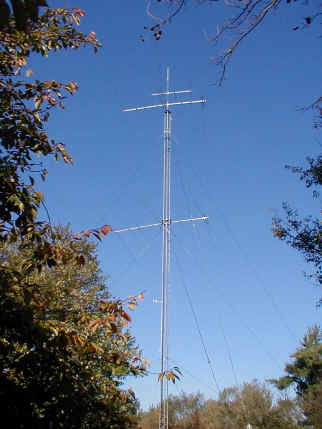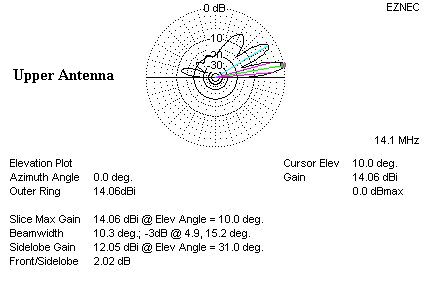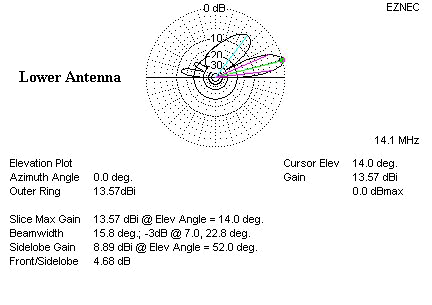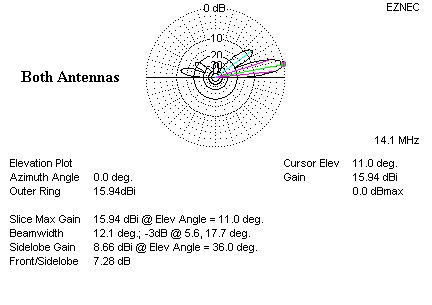
10/15/20 Meter Stack
Tower #1 sports a Bencher Skyhawk tribander stack, with the top antenna at 100 feet (30 meters) and the middle antenna at 62 feet (19 meters). I plan on adding a third antenna at 32 feet (10 meters) in the future. The lower antenna is turned using a Tic Ringrotor. The antennas are phased together using an Array Solutions Stackmatch.
 The
stackmatch is equipped with the second feedline option, which splits the two
antennas on to seperate feedlines when switched to the Aux position. This
allows the antennas to be used on different bands by the two stations for
multi/two contests or multiplier chasing.
The
stackmatch is equipped with the second feedline option, which splits the two
antennas on to seperate feedlines when switched to the Aux position. This
allows the antennas to be used on different bands by the two stations for
multi/two contests or multiplier chasing.
Immediately after putting up my towers, we had a very strong microburst thunderstorm, with wind gusts up to 90mph. Then three weeks after that, Hurricane Isabell paid us a visit.
My towers held up fine, but the driven elements on the Bencher Skyhawk were bent in the thunderstorm. Bencher uses a plastic clip on the driven elements to maintain their spacing from each other, and I am convinced this allowed the wind force on each element to accumulate and caused the elements to bend. The 20m reflector, which is the longest element on the antenna, was fine, but the driven elements were bent on both sides.
So even though the Bencher Skyhawks have performed very well electrically, I do not believe that the driven elements meet their claimed wind spec with the plastic clip on those elements. So far I have been unsuccessful in getting Bencher to replace the driven elements under warranty.
Here are the elevation patterns for the stack on 20 meters. First is the top antenna by itself, then the bottom antenna, then the stack.



 Here
is a picture of the bent driven elements on the upper Bencher Skyhawk.
Here
is a picture of the bent driven elements on the upper Bencher Skyhawk.